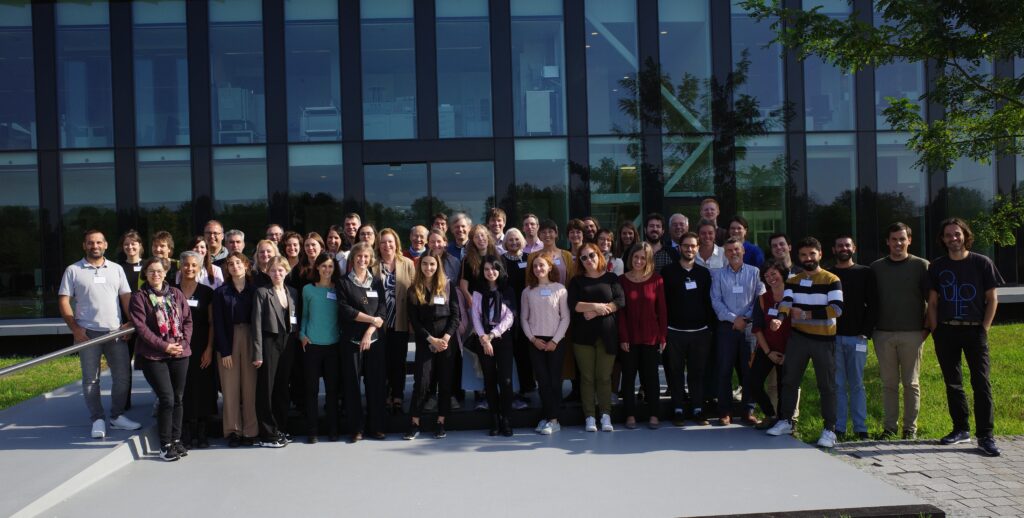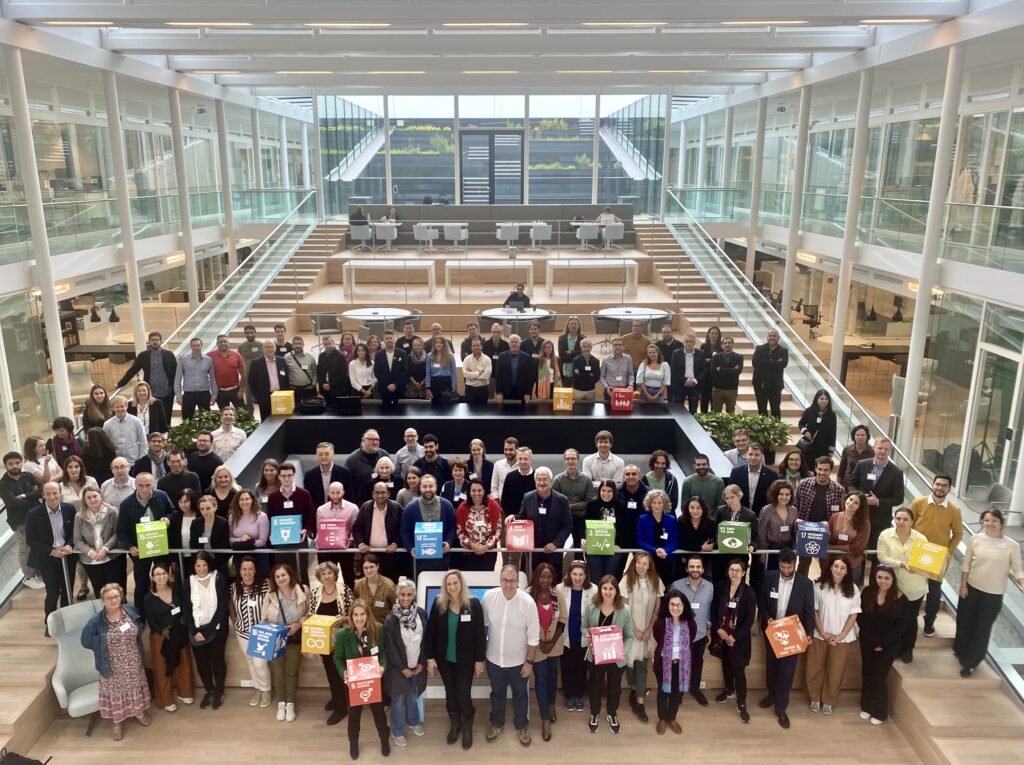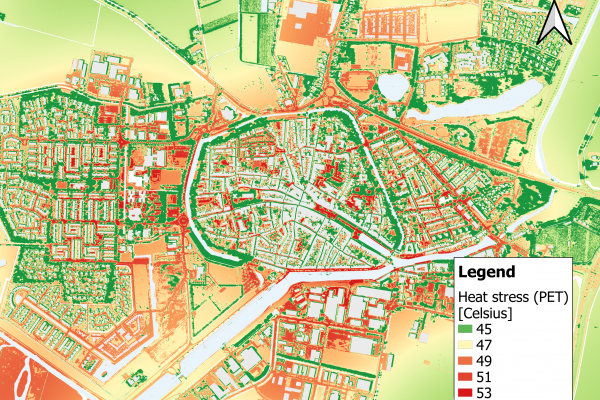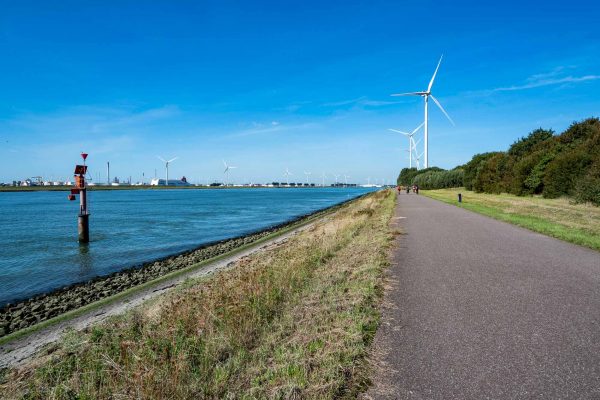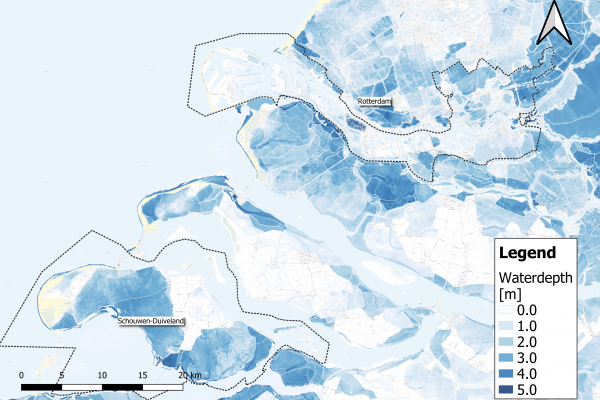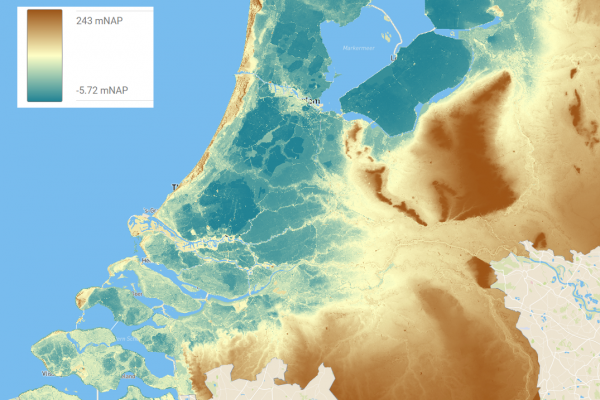Last week IMPETUS partners met at KWR in the Netherlands to review the latest project achievements at the end of a second year of activity and outline planning for the next half of the project. Not only that, a joint all-day meeting with partners from sister project ARSINOE took place to explore project synergies and exchange tips on climate adaptation pathways.
The 3rd IMPETUS general assembly which brought together over 60 impetus partners to the KWR facility in Utrecht kicked off on the 9th of October and marked the halfway point of the project. The first two days of the GA saw partners provide updates on all areas of the project, from work on governance and stakeholder engagement for transformative adaptation, to the setting up of digital resources to provide easier access to climate solutions, to working on joint identification of project impacts as products, and progress on solution deployment in each of the seven IMPETUS demo sites.
On a general level, within the framework of IMPETUS, the ‘Resilience Knowledge Booster’ (RKB) model is taking shape and looking to have a first partial prototype of their digital decision aiding tool ready by the end of this year. The project is also working on a multisided platform which will enable stakeholders to better locate solutions and experts who can support relevant adaptation solutions tailored to their needs. Further data gathering and processing from the seven demo sites has taken place and a series of climate change indicators (such as heat vulnerability) have been fine-tuned.
Some of these activities have given light to a first iteration of the web base “hot-spot” (HIPS) tool that allows for identifying and prioritizing regions (based on NUTS) that are exposed to climate risks, and are vulnerable or have low adaptation capacity. Users can explore various datasets and combine them to perform climate hot-spot analysis.
During the meeting, some insights were also given on the specific, highly diverse, climate change challenges and solutions that the demo site teams are aiming to tackle. Some of the main advances include:
- In the Berlin-Brandenburg metropolitan area, the ‘Continental’bioclimatic region, partners have been busy identifying synergies with the Berlin Masterplan for Water and developing a simplified model accounting for all factors of the regional water balance. They have also worked on a mock-up of a Decision Theatre for integrated water resource management.
- In Catalonia, the ‘Coastal’ bioclimatic region, partners have been continuing to work on the construction of a multi-functional wetland to test water treatment in flood risk areas of the Ebro Delta; while also carrying forward several other activities related to sand dune restoration, sediment transport and the development of a satellite-based coastal monitoring system.
- In the Attica region, ‘Mediterranean’,bioclimatic region, partners have started the construction of a sewer mining unit that will reclaim waste water for urban irrigation and have launched a first version of a Digital Twin of the Attica Region.
- In Zeeland and Rijnmond, the ‘Atlantic’bioclimatic region, partners have developed on-the-fly calculation of heat stress maps, implemented in a tool to calculate the effects of different spatial developments and modelled decarbonization option for all major industrial refineries in the port of Rotterdam.
- In Troms and Finnmark, the ‘Arctic’bioclimatic region, local partners have been working to climate proof Tromsø city centre by engaging local authorities in discussions supported by VR technology that demonstrates the effects of sea level rise. They have also been using snowpack simulations, weather data and slush flow to develop a more accurate early warning system for rockfalls, landslides and avalanches.
- In the Zemgale region, the ‘Boreal’bioclimatic region, partners have finished testing a flood forecasting model that can support the upgrading of a flood early warning system from city to regional scale;and have been assessing good practice examples to inform a regional climate change adaptation plan
- In the Valle dei Laghi, the ‘Mountains’ bioclimatic region, partners together with local stakeholders have developed a mock up for a Decision support system for water management and have also analised local historic building stock to better inform protection measures for cultural heritage.
During the second project year, IMPETUS also liaised with sister projects and several partners presented project activities and results in events related to climate change and water, space technology and Earth observation, and global sustainable development, among others. Information about some of these can be found in the IMPETUS website events and stories pages.
Joint meeting with ARSINOE and visit to Zeeland Delta Project
In an effort to establish stronger synergies with sister Green Deal projects, on the 11th of October a joint meeting hosting the full consortiums of both IMPETUS and ARSIONOE took place at the KWR premises.
Over 120 attendees populated the KWR rooms where after an overview of the ARSIONE case studies and the IMPETUS demo sites, IMPETUS and ARSINOE partners worked together in breakout sessions dedicated to several cross cutting topics relevant to both projects such as: Heat modeling & Urban biodiversity; Water Energy Systems approaches; Flooding modelling, impact assessments and regional planning; Water quality and ground water; Agriculture and biodiversity; Virtual reality experiments and digital twins and, the challenges and opportunities for stakeholder engagement.
After a lot of networking and exchange of ideas, on the following and final day, IMPETUS and ARSINOE partners went to see climate adaptation solutions in action and made their way to Zeeland to learn about the Delta Works Project.
Due to large parts of the Netherlands being below sea level, many of its cities and towns have been under constant threat of flooding. The greatest flood disaster in the country’s history occurred on the first of February 1953, inundating more than 200000 hectares of land, close to 2000 people drowned and 72.000 were displaced. The catastrophe led to implementation of the Delta Project (Delta Works)
The Delta Works are a series of construction projects in the southwest of the Netherlands to protect a large area of land around the Rhine–Meuse–Scheldt delta from the sea. Constructed between 1954 and 1997, the works consist of dams, sluices, locks, dykes, levees, and storm surge barriers located in the provinces of South Holland and Zeeland.
The aim of the dams, sluices, and storm surge barriers was to shorten the Dutch coastline, thus reducing the number of dikes that had to be raised. The area has become an example to many other territories around the world in adapting to the effects of flooding and climate change.
Background on IMPETUS
The central aim of the EU-funded IMPETUS project is to empower communities in their journey towards building resilience to the local effects of climate change. Resilience, which involves the capacity to prepare for, adapt to, recover from, and potentially even thrive amidst environmental shifts, holds utmost significance for the sustained well-being of societies in terms of their socio-economic, ecological, and human health aspects.
IMPETUS is pioneering an approach that blends scientific data with digital tools, designed for collaborative use by regional communities. This collaborative process allows them to explore and select the most suitable strategies to adapt to climate change. These strategies or adaptation pathways entail the selection of several technical, nature based, financial and governance solutions, that end into the identification of innovation packages for each region. This innovative method for enhancing understanding of climate change resilience can be customized and adopted by any community to fit their unique circumstances.
